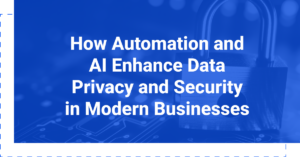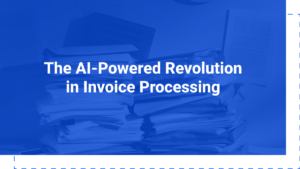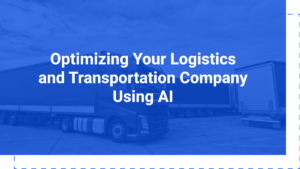How document automation software can supercharge your digital transformation

- Industry insights
- • June 14, 2021
- • 5 min read
Share:
Table of Contents
Let’s stay in touch
Subscribe for more content handpicked just for you.
“A quantum leap.”
That’s the term used by McKinsey to describe the integration of new technologies in response to Covid-19. Across the board, we’re seeing a rapid state of digital transformation — often years ahead of original forecasts.
Now, of course, this is no shocker: The pandemic has introduced a “new normal” in virtually every facet of our lives. Organizational digital transformation, it turns out, is yet another such facet.
Thanks to the pandemic, we’ve seen a variety of industries mass-adopt digital stopgaps. These solutions have largely proven effective, creating lasting demand. And this demand is now requiring greater investment in new technological solutions — both internally and on the customer-facing side. Essentially, this is the story of pandemic-induced industry evolution.
Unsurprisingly, McKinsey found that companies that responded to this demand by implementing new-age technologies have overwhelmingly succeeded in navigating through the Covid-19 storm. And, more importantly, they’ve best positioned themselves to tackle their respective markets in the years to come.
That’s all good and well, but how feasible is digital transformation for your company?
Let’s come back to earth for a minute. The reality is that even in today’s digital age, many small and medium-sized businesses (SMBs) can’t simply take on this “quantum leap.”
Perhaps they’re overly reliant on decades-old technologies or legacy systems — with little wiggle room for upgrades. Or, perhaps, they use a half-dozen different tools for their various operations and are stuck in a vicious loop of inputting data from one into the other. It may also just be that they feel they lack the resources or ability to implement any worthwhile solution.
In other words, digital transformation may sound great in theory but lacks that practical “let’s do it!” factor. So let’s speak practically: What might it look like to implement workflow software today, tomorrow, or next week?
Automated data capture: An easy-to-implement solution for streamlining your workflow
Let’s start with the concept of automation — for our purposes, document processing automation in particular.
The idea is simple: Industries such as Logistics, Insurance, Finance, and Healthcare require extensive manual labor to read, record, and follow up on the data contained within various documents. We’re talking contracts, order forms, invoices, receipts, medical records, and more.
Now, instead of relying solely on manual labor for these tasks, let’s bring workflow software into the mix to perform the same tasks with an impeccable degree of accuracy, speed, and security.
Why document processing automation? It’s not just for appearance’s sake
Sure, it all sounds convenient enough. But let’s cut to the chase and really spell out the “Why?” of the matter. Adopting document automation processes isn’t about simply keeping up with the hippest tech; it’s about optimizing your ROI. With real, tangible, workflow-altering results:
Accuracy. Plain and simple, intelligent document processing reduces human error and cross-team inconsistencies (as well as the fallout from these mistakes). Instead of chasing your tail tracking down typos, you can leave the dirty work to the software.
Now, of course, automation isn’t 100% foolproof (especially for the most intricate of documents). But it sure does beat relying on a worker at the end of an eight-hour day.
Cost- and time-saving. With the power of workflow software behind you, there’s no longer any need to waste so many precious hours on such tedious tasks. We’ve actually seen document processing automation free up as much as 95 percent of workers’ time!
Now, that’s time they can spend on any number of more profitable tasks. Whether it’s sales, marketing, or customer relations, you’re essentially trimming the fat of your internal operations to focus more energy on the things that boost your bottom line.
Convenience. Cutting down on paper documents is the current trend for good reason: Not only as a green initiative but also to make that data better organized and easily accessible. It’s safe to say that the cloud is easier to sift through than a dark basement of filing cabinets.
On top of that, you don’t need to be a tech wiz to tap into these benefits. Plenty of today’s document processing tools are intuitive and easy to integrate into your existing workflow. No need to hire any specialists; if anything, you can turn to the software’s support team to smooth things out.
Security. Automated data capture inherently brings up a concern regarding privacy and confidentiality. With information being scanned from various remote locations, it’s perfectly reasonable that this data will be in some way vulnerable.
That’s why today’s data capture tools have adapted accordingly — sending scanned information straight to the cloud with advanced SSL encryption. That data isn’t shared or backed up anywhere else, and once you’re done using it, it’s deleted as quickly as it was uploaded. What you get is a process that is exponentially more secure than storing scans of documents on your personal device.
Productivity. Perhaps the first thing you think of when hearing “automation” is speed, right? We can let our computers take care of these repetitive tasks in a fraction of the time to free up your day and your week for other tasks.
… But what about your month? What about your year? Automated workflow software immediately brings all of these aforementioned benefits to your door, but its greatest impact is the ROI you see in the long term.
The big picture is establishing a lasting culture built on efficiency and relationships.
For starters, document processing automation can transform your team’s internal operations. Digitization and cloud compatibility enable more streamlined collaboration across teams — especially as remote working continues gaining momentum. Plus, it lets you set the tone by adopting a progressive, forward-thinking mindset that everyone can rally around.
And this also applies externally as well. With automated data capture, you allow your team to spend more of their time and energy focusing on the things that matter most… Like your audience. Now, you’re giving customers more of your attention and producing faster, more accurate results — which in and of itself is the most effective marketing.
Furthermore, these same customers expect tech-savvy, user-focused solutions. By providing them, you’re building a brand identity that your audience will inherently trust — further enabling you to scale.
And as you do scale, you can continue focusing exclusively on the big picture: Automating the manual work means you can focus more on the creative work. Every day, you can play the role of evaluator instead of calculator.
… Which brings us full circle to digital transformation. With an automated data capture tool, you can work smarter, exponentially boosting your productivity. And you don’t need to be a Fortune 500 company to do so either; in 2021, business automation is as accessible to SMBs as it is effective.



